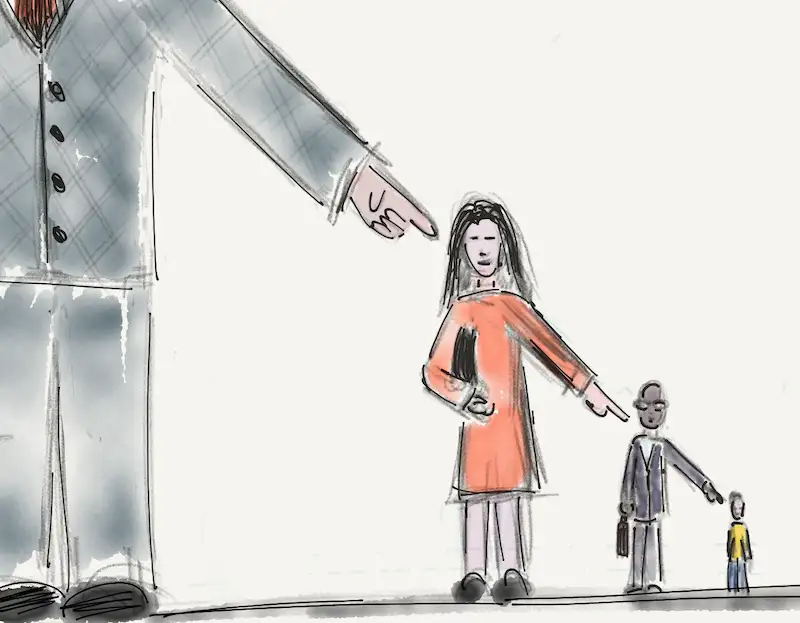When working with some of our larger customers we frequently run into common barriers to change. Change is difficult and, no matter how often we say it, there is no silver bullet for how to get there. However, we can say there are commonalities in approaches, things we’d look for and actions we’d take in response to those findings. When we look at the delivery of IT capabilities within organizations, we often come across the barriers caused by how the teams are organized and, even more frequently, how the organization is working with technology. Developing powerful roadmaps is valuable and greatly helps with generating alignment and a common vision.
In this post I am going to talk through the first of three common organizational problems we encounter and ways to overcome them to better achieve your desired business outcomes. The first of these is called blame culture…
Blame Culture
Blame Culture or Culture of Blame is most visible in organizations where no action can be taken without clear understanding of who will “take the blame” if the action were to fail. This type of organization will typically be slow to make decisions and highly resistant to experimentation. Experiments can fail and in a culture where somebody is always to blame, failure is not an option. Within this culture it is hard to develop a learning organization as one of the simplest ways to avoid taking blame is to not talk to anybody else. It is estimated that up to 30% of productivity in such organizations goes to waste in individuals and teams working hard to ensure blame “lies elsewhere” or that “they are not to blame”.
Another common attribute we see in these types of organization is a lack of vertical alignment. By which we mean, the layers of the organization have a tendency to only provide positive feedback in order to avoid being blamed. This results not only in necessary critical conversations not occurring but in missed opportunities for improvement.
Changing a culture of blame is very difficult. Innovative thinkers and problem solvers are often pushed to one side and change of any kind is frowned upon. Alignment to customers and business outcomes is absent as everybody is too busy making sure it won’t be their fault.
So what can you do?
The problem within a culture of blame often stems from a lack of accountability. When you have accountability with it comes an understanding that you could succeed or, more importantly, could fail. Within a culture that it is safe to fail that failure is seen as an opportunity for improvement and learning. Through this you begin to see how strong accountability is necessary to avoid a culture of blame and instead build a learning organization.
We now understand that behaviour builds culture (and not the other way around) so logically we can start to change a culture of blame through personifying the culture we would like to see. This is where we can learn important lessons from coaching:
- Help people to consider situations from the other persons perspective. There is likely a reason they are reacting the way they are. Change the use of language from “What did you do?” to “What happened here?”. Essentially, moving questions to focus on the situation and not the person.
- Ensure meetings contain a clear contract. A clear contract is one where you have a strong vocal agreement from all involved as to the expected outcome of the meeting. The outcome must also be something that is achievable within the time set for the meeting and within the capability of the attendees. This is easily achieved by starting meetings by asking “What are we here for?”.
- Develop and encourage regular feedback sessions on how the work is going. These can take the form of blameless post-mortems or retrospectives. In either case the goal is to provide a safe space to vocalise how work is being done. In particular, we are once again shifting the focus from the people and to the work.
It is amazing how quickly simply introducing these ideas can change the way people interact.
What about the rest?
However, in order for it to be truly effective we also need to ensure that the actions and language permeate all levels of the organization. If you only make these changes within your delivery teams and your leaders are still working within a culture of blame, all your hard work will be for nothing.
For example, if your leaders are failing to take accountability, your teams will see that and copy them.
To overcome this barrier we have to introduce a common language and alignment vertically within the organization. Common models we use for this include OKR and Balanced Scorecards (a topic for another post)
Conclusion
Next time I will discuss how architectural vision can get in the way of the transformation and ways to overcome these hurdles.




